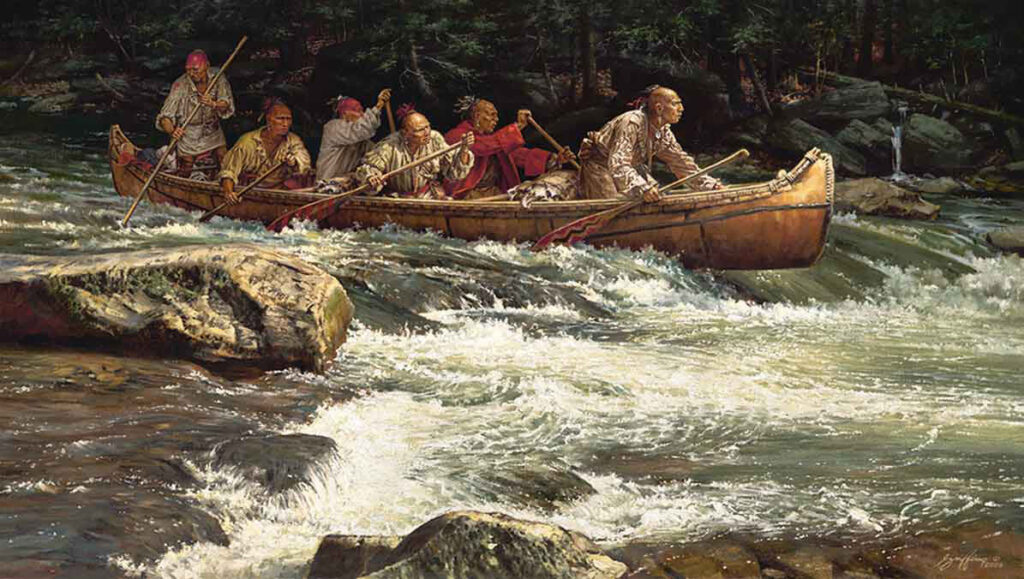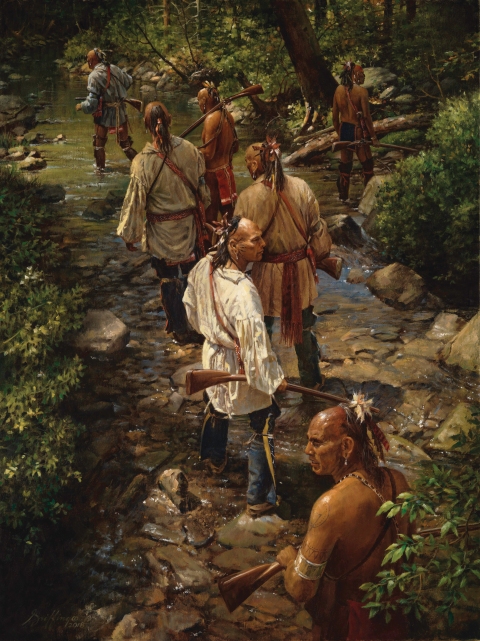
BRANTFORD — It seems there are treasure hunters all over the Cable networks these days looking for “Oak Island Treasure”, “Civil War Gold”, “Treasure Hunters”, “Lost Nazi Gold”, “Mayan Gold,” “Philippine Gold” … and the list goes on. But does anyone know anything about the “Lost Silver of the Grand River?”
This local mystery has become a thing of legend amongst Brantford and area history buffs for many years. It happened, so that legend goes, right in the middle of the War of 1812-1814, on the Grand River near the settlement that would later become known as Brantford.
As the story goes, a raiding party of primarily American Kentucky Rifles, drove deep into what is now Ontario but were stopped by a handful of British soldiers that were stationed in the Brantford area, and a by Iroquois warriors. Most of the British forces were garrisoned at the Burlington heights or at Ancaster.
 American General McAurthur, who commanded a brigade under General William Henry Harrison during the battle of the Thames, led about 900 men across the border performing raids and burning mills and crops right up to Oakland, Scotland, Simcoe and Burford regions. They were headed toward Ancaster, but they would have to cross the Grand River first, which they attempted at D’Aubigny Creek in today’s West Brant.
American General McAurthur, who commanded a brigade under General William Henry Harrison during the battle of the Thames, led about 900 men across the border performing raids and burning mills and crops right up to Oakland, Scotland, Simcoe and Burford regions. They were headed toward Ancaster, but they would have to cross the Grand River first, which they attempted at D’Aubigny Creek in today’s West Brant.
It is said that the Americans were carrying looted silver with them, one account says it was the payroll for the British troops in the form of barrels of silver and silver coins that was captured from a train earlier.
When McArthur and his Kentuckians were pushed back by the Brits, local farmers and Iroquois Warriors, they were given chase by some of the Mohawks. It has been said that at least two barrels of sterling silver coins were discarded by the retreating Americans. Such a hoard would have been very heavy and cumbersome, especially when being chased. The general area is suspected to be somewhere between D’Aubigny Creek in West Brant, to just above where the present Cockshutt Bridge now stands, but some accounts say the stash could have been made closer to Newport. .
According to the story, one barrel (or cask) was stashed in a rotting tree stump somewhere along the river bank, and another, it has been said, was pushed into the river itself to hasten the American’s retreat. Neither were ever recorded as being found.
Historian Jean Waldie, in her book, Brant County – The story of its people, Vol. II, in her study in the early 1950’s records that the bootie was captured when the Americans raided a British supply train containing payroll for troops further west.
One story circulated that one cask was discovered in the late 19th century on the Coombes farm on Shellards Lane. Coombes had purchased the farm from the Coleman family. That area has been extensively developed in recent years but no one as yet has found any trace of the buried loot.
Archaeological Services Inc., about a decade ago, discovered a stash of silver coins along the bank of D’Aubigny Creek, but the dates do not correspond to the legend.
In 1954, a local barber, T.A. Potts relayed a story to Waldie, that was told him by his uncle, George Handfield. He is quoted in her book telling the story as he recalled it.
Potts told Waldie in the 1950’s that about 100-years earlier, William Street and George Handfield’s father, Levi Handfield, were talking about the rumoured lost treasure in the presence of a new hired hand. They talked about how people used to use ashes or lime powder to mark these stashes, which acted as safety deposit boxes when there were no banks. When the dinner bell rang, the new guy begged off saying he wasn’t hungry. After lunch he could not be found.
They went to look for him but could only find a hole in the ground by the foundation of the old farm house on the property. The farmhand was never heard from again. Potts’ uncle believed he had found one of the casks and disappeared.
Handfield also told people that he knew of a Moses Reeder who found the remains of seven Iroquois Warriors. He said that he knew by the necklace one of the skeletons was wearing. The burial site was near the foot of Farringdon Hill near Mount Pleasant and he believed they were from that skermish.
As the story goes, Handfield turned up the remains while plowing a field between Dufferin Ave. and the rear of St. Pauls Church in West Brant. Potts and his uncle found several articles near the same site which were later given to the Brant Historical Society in the early 1950’s.
“On Sunday morning George was walking along the furrow and happened to looked down and see a skeleton with bear claws around its neck and a tomahawk beside him,” related Potts. “It being a Sunday, he just put the sod back over it. Probably old Mr. Reeder never noticed it at all.”
In 1852, farmer Tom Shellard plowed up a brass pistol barrel on his farm on Shellards Lane.
One tantalizing piece of information was passed on by George Bloomfield, former curator of the Brant County Museum, who believed that at least some of the loot was buried by the retreating Americans “within a half mile of the junction of Cockshutt and Newport Roads.”
In another story, some silver was stashed in a military drum before being buried, “within a half-mile of D’Aubigny Creek.”
To date, there has been no recorded find of the 1813 bootie. Some modern historians are not convinced the legend is true at all, but others are still intrigued, and so, the legend of Lost Grand River Silver lives on.







